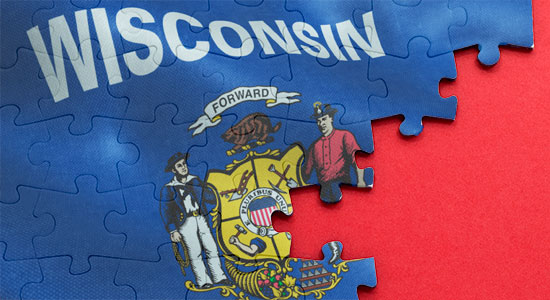
June 17, 2020 – Any challenge to redistricting maps that will be drawn by the Wisconsin Legislature after the 2020 census will go directly to the Wisconsin Supreme Court, under a petition recently filed by Scott Jensen, former speaker of the state Assembly.
Jensen joined the Wisconsin Institute for Law and Liberty (WILL) in filing petition (20-03), which establishes appellate procedure rules for future redistricting litigation.
Members of the Wisconsin Legislature, as well as Wisconsin representatives in Congress, represent districts. They are elected by voters in those districts.
Wisconsin has 33 Senate districts, representing 33 Senate seats. Within those 33 districts are 99 Assembly districts representing 99 Assembly seats. Eight voting districts represent eight Wisconsin seats in the U.S. House of Representatives.
By state constitution, the Wisconsin Legislature redraws the voting districts every 10 years to account for shifts in population. A basic requirement is that voting districts be relatively equal in population, giving each voter in each district equal voting power.1
Redistricting Litigation Common
Redistricting litigation has occurred every 10 years since 1972, the last time the Wisconsin Legislature enacted a redistricting plan without court intervention.2
 Joe Forward, Saint Louis Univ. School of Law 2010, is a legal writer for the State Bar of Wisconsin, Madison. He can be reached by email or by phone at (608) 250-6161.
Joe Forward, Saint Louis Univ. School of Law 2010, is a legal writer for the State Bar of Wisconsin, Madison. He can be reached by email or by phone at (608) 250-6161.
Under Section 2 of the Voting Rights Act of 1965, redistricting plans cannot discriminate against minority groups through racial gerrymandering.
But litigation also focuses on partisan gerrymandering, the practice of manipulating voting districts by dividing, consolidating, or otherwise arranging voters in a way that dilutes voting strength and favors one party’s incumbents to the detriment of the other.
In the last redistricting cycle, Democratic voters challenged redistricting maps drawn by a Republican-controlled Legislature and signed by former Gov. Scott Walker.
That challenge to the 2011 maps meandered up to the U.S. Supreme Court, which in 2018 remanded the case to district court for plaintiffs to show particularized injuries using evidence “that would tend to demonstrate a burden on their individual votes.”
The U.S. Supreme Court subsequently decided Rucho v. Common Cause, 139 S. Ct. 2484 (2019), which held (5-4) that “partisan gerrymandering present political questions beyond the reach of the federal courts.” The Wisconsin case was dismissed under Rucho. The majority opinion by Chief Justice John Roberts put the issue in state hands.
“Provisions in state statutes and state constitutions can provide standards and guidance for state courts to apply,” Chief Justice Roberts wrote.
“Indeed, numerous other States are restricting partisan considerations in districting through legislation. One way they are doing so is by placing power to draw electoral districts in the hands of independent commissions,” the chief justice continued.
Gov. Tony Evers, in January, issued an executive order creating an independent commission designed to curb partisan gerrymandering. The Republican-controlled Legislature reportedly intends to draw maps without the commission’s input.
Anticipated Litigation
By state constitution, electoral districts must “be bounded by county, precinct, town, or ward lines, to consist of contiguous territory and be in as compact form as practicable.”3
“Beyond that, the redistricting process is guided only by court precedents and the weight of recent practice,” according to a Wisconsin Legislative Reference Bureau article on redistricting by Michael Keane, a senior research analyst. “There are no statutory guidelines or requirements for legislative redistricting in Wisconsin.”
Jensen and WILL, in their petition to the Wisconsin Supreme Court, noted that redistricting litigation is likely again in 2021.
“The State of Wisconsin currently has divided government with a Democratic Governor and a Republican Legislature,” the petition states.
“That state of affairs is likely to continue after the November 2020 elections which means that adopting a new map for redistricting after the 2020 census will likely be difficult and any dispute will end up in the courts.”
The petitioners noted a 2002 Wisconsin Supreme Court per curiam decision in which the court deferred redistricting litigation to federal court to accommodate the requirements of the case but vowed to “initiate rulemaking proceedings regarding procedures for original jurisdiction” in future in redistricting cases.
“It is time to redeem that promise,” the petitioners note in a supporting memo. “It is incumbent on this Court to have rules in place that allow the Court to meet this State’s responsibility for the redistricting process rather than defer to federal courts.”
The petition proposes procedural rules for any redistricting litigation. The maps, drawn through legislation, would need the approval of Democratic Gov. Tony Evers.
The petition notes that the legislature could not approve maps until December 2021, which means redistricting litigation that does not go to the Wisconsin Supreme Court as an original action would not likely be decided until after the April 2022 elections.
A party could file a petition for original action “any time after the U.S. Census Bureau delivers apportionment counts to the President and Congress as required by law.” That is, a party could file suit before the Legislature has adopted a new redistricting plan.
“If a petition for an original action is filed prior to the time that the Legislature has adopted a new redistricting plan, the court may stay all, or part, of the action until the Legislature has adopted a plan,” the proposed procedure statute states.
The Wisconsin Supreme Court could make revisions to any proposed plan for congressional districts and/or the state legislature prior to the statutory deadline for candidates to file nomination papers for the primary or general election.
Jensen and WILL filed the petition on June 3, 2020. The Wisconsin Supreme Court has not yet scheduled the petition for a public hearing.
Endnotes
1 Keane, Michael, Redistricting in Wisconsin, Wisconsin Legislative Reference Bureau (April 2016).
2 Baldus v. Members of Wisconsin Gov't Accountability Bd., 849 F. Supp. 2d 840, 843 (E.D. Wis. 2012).
3 Wis. Cons. Art. 4, Section 4.
